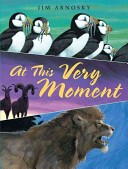Leadership: Lighten Your Load with Shared Duties
Stephen Covey states that leadership is communicating to people their worth so clearly that they are inspired to see it in themselves.
The concept of leadership in the classroom is one that I was initially reluctant to put in to practice. This was not because I was against student leaders or even the idea of giving up control of my classroom to my students. I believe this idea frightened me more because of the unknown variables that come into play with initiating something new and if I am honest there was also a fear of piling more work onto my already overflowing plate.
If someone would have told me that using certain principles of leadership would have actually lightened my load then maybe my first response might have looked a little different and I would have been quicker to jump right in with both feet but I was skeptical.
I will be the first to say that there are many practices introduced under the idea of promoting student leaders that I have witnessed that are not only impractical but also not beneficial to students or their teachers BUT there are also many that I can get behind.
Here is one leadership concept that originally wasn’t my favorite as it seemed outdated and overdone. However, in witnessing how this initiative has actually allowed student to be more invested in the class as their own, I would say it is an example of a Win-Win situation.
Classroom Leadership Roles: Now many teachers already use a version of these in their classroom but in beginning this practice there were many that I wouldn’t’ have thought of on my own that proved to be beneficial in the classroom for students and me as the teacher.
· Board Manager – Students are in charge of writing daily EQ’s and homework a daunting task that is required but not always remembered by most teachers.
· Receptionist – Students are in charge of answering the phone when it rings and teachers don’t have to stop in the middle of their teaching.
· Lunch Count – Students tally and total lunch choices and submit it to cafeteria. They also hunt down those students who didn’t make their choice in the morning.
· Classroom Engineer – Students in this role manage tidying up each afternoon by sweeping floor, organizing supplies, etc.
· Agenda Accountability – Students rotate around the room with a stamp and check student agendas to be sure they copied assignments down as required.
· Teacher Assistant – These students help with any tasks that the teacher may need throughout the day.
What are some Classroom Leadership Roles you have found helpful in your room?
Stephen Covey states that leadership is communicating to people their worth so clearly that they are inspired to see it in themselves.
The concept of leadership in the classroom is one that I was initially reluctant to put in to practice. This was not because I was against student leaders or even the idea of giving up control of my classroom to my students. I believe this idea frightened me more because of the unknown variables that come into play with initiating something new and if I am honest there was also a fear of piling more work onto my already overflowing plate.
If someone would have told me that using certain principles of leadership would have actually lightened my load then maybe my first response might have looked a little different and I would have been quicker to jump right in with both feet but I was skeptical.
I will be the first to say that there are many practices introduced under the idea of promoting student leaders that I have witnessed that are not only impractical but also not beneficial to students or their teachers BUT there are also many that I can get behind.
Here is one leadership concept that originally wasn’t my favorite as it seemed outdated and overdone. However, in witnessing how this initiative has actually allowed student to be more invested in the class as their own, I would say it is an example of a Win-Win situation.
Classroom Leadership Roles: Now many teachers already use a version of these in their classroom but in beginning this practice there were many that I wouldn’t’ have thought of on my own that proved to be beneficial in the classroom for students and me as the teacher.
· Board Manager – Students are in charge of writing daily EQ’s and homework a daunting task that is required but not always remembered by most teachers.
· Receptionist – Students are in charge of answering the phone when it rings and teachers don’t have to stop in the middle of their teaching.
· Lunch Count – Students tally and total lunch choices and submit it to cafeteria. They also hunt down those students who didn’t make their choice in the morning.
· Classroom Engineer – Students in this role manage tidying up each afternoon by sweeping floor, organizing supplies, etc.
· Agenda Accountability – Students rotate around the room with a stamp and check student agendas to be sure they copied assignments down as required.
· Teacher Assistant – These students help with any tasks that the teacher may need throughout the day.
What are some Classroom Leadership Roles you have found helpful in your room?








































